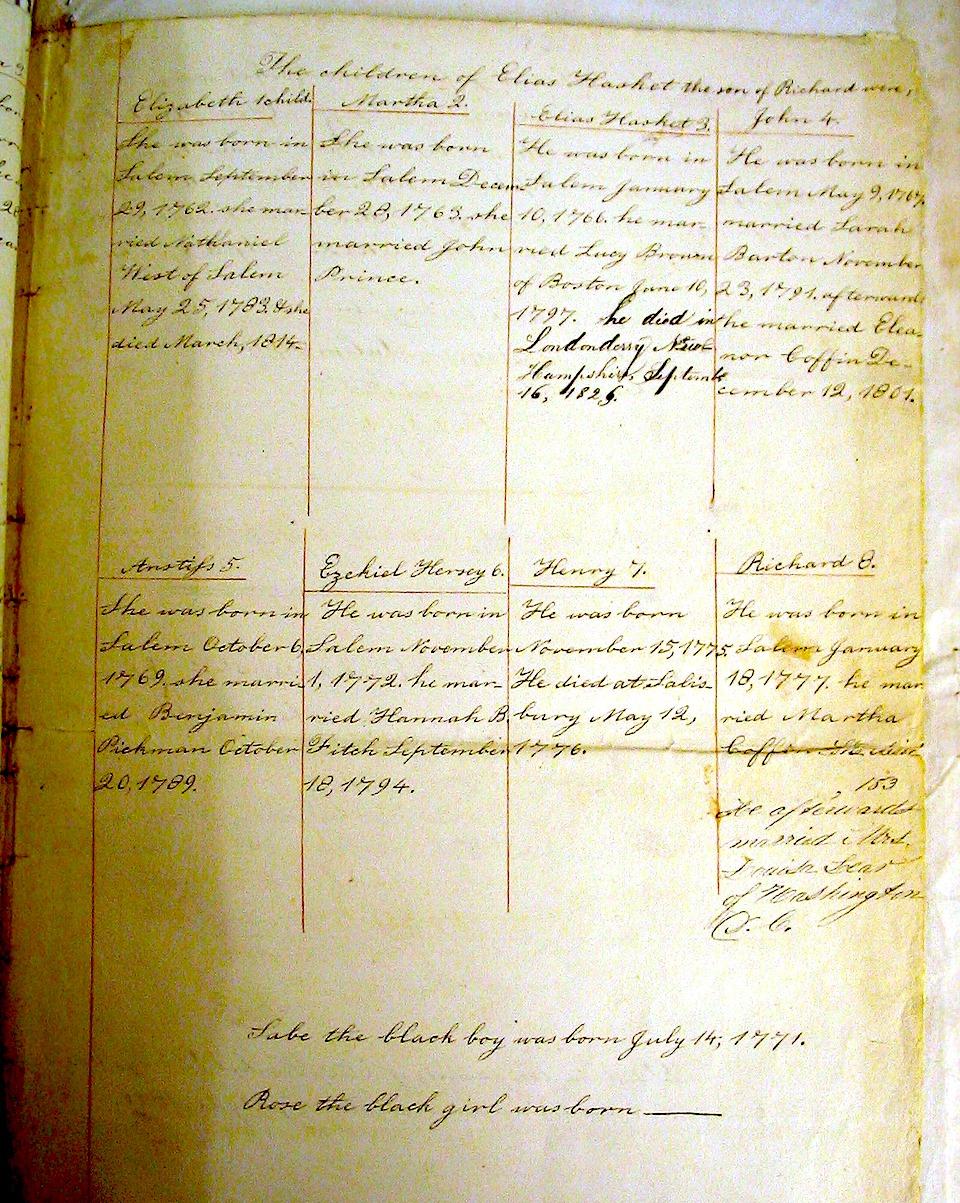
The Derby family bible played a part in a new program that chronicles African American life at Salem, Massachusetts in the 18th and 19th centuries./NPS
Some of the African Americans who lived in the port town of Salem, Massachusetts, during the early 19th century became leaders in the abolitionist movement. But when and how did slavery end in Massachusetts? In what ways did a growing anti-black sentiment inhibit “Life, Liberty and the pursuit of Happiness?” Answers to those questions and more are explained in Pathways in Freedom, a new digital program at Salem Maritime National Historic Site.
Pathways in Freedom harnesses the power of technology to offer an immersive experience for students and the public alike to explore these questions and more. Funded in part by Eastern National, the program is hosted by “OnCell,” a leading digital storytelling platform for cultural destinations.
“This project has been in the works for over two years, but certainly the launch of it is timely in this moment,” said Paul DePrey, superintendent of Salem Maritime and Saugus Iron Works National Historical Sites. “Our new program is well-researched and will critically challenge traditional perspectives of our nation’s history.”
Salem Maritime National Historical Site chose to launch the project on July 14, the 246th anniversary of the birth of Sabe, a man of African descent who lived in Salem.
Sabe Derby and Rose Lane-whose lives inspired Pathways in Freedom-were free when they married in 1799. But their status in earlier years living in Salem and laboring for the Derby family is less clear. Several primary source documents trace the continuous relationship between Sabe and Rose and the Derby family, as well as the ambiguity of their transition from slavery to freedom.
“This is the kind of interpretive and educational program we would like to develop more of,” said Susan Russo, program manager of visitor experience and community engagement at the two historic sites. “Innovative approaches like Pathways in Freedom allow teachers to engage students with the multi-faceted stories of Salem. These stories also allow our visitors to connect the past with the present and inspire appreciation for these special places.”
Another key piece to the program’s development was collaborating with two local scholars with experience in developing interpretive and educational materials. Pathways in Freedom was conceived of and created by Dr. Bethany Jay, associate professor of history at Salem State University and Lindsay Randall, curator of education and outreach at the Robert S. Peabody Institute of Archaeology in Andover.
Dr. Jay is the co-editor of Understanding and Teaching American Slavery and does critical work with Teaching Tolerance’s “Teaching Hard History: American Slavery,” a program of the Southern Poverty Law Center. Lindsay Randall has worked on these two projects as well, and develops and implements thoughtful and creative programs that highlight experiences of black and indigenous people.
Finally, National Park Service education staff completed and launched the project that uses interactive technology, innovative interpretation, and rich documentation so that users can “do history.”
The Pathways in Freedom interactive tour is set in Salem and surrounding communities between the years 1783 and 1808 as African Americans pursue new lives and work as free people. What options were available to them and how did they make their choices? How might their personal life and relationship with former enslavers affect their chances for success? How did the larger community respond to its newly freed members? Pathways in Freedom offers an opportunity for students and the general public alike to gain a deeper understanding of the past so that we might better confront the injustices of today.



Comments
Having visited the Peabody in Andover last fall, I was most imprssed with personal tour by Lindsey Randall.
We have been long time supporters of Southern Poverty Law and it is good to learn they continue
to support quality work to the benefit of all peoples: those with voice as well as those who have been too long
silenced.
While working at the Essex Institute in the mid 80s, the Education Department created a program using primary sources from both the Essex and the Peabody on the Slave Trade out of Salem prior to the abolition of slavery in Massachusetts. The trade was mostly with Surinam. These were letters of Instruction, crew lists, supplies, medicines to take, etc. One letter was from a teen to his mother telling her that the captain, his father had bern killed by the slaves that were taken on board.. Salem's Rev. William Bentley, writes about the trade in his diary and the church reccords. It would be useful if these items could be made known to researchers.